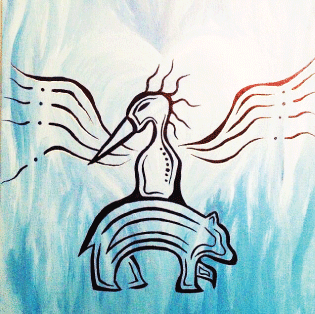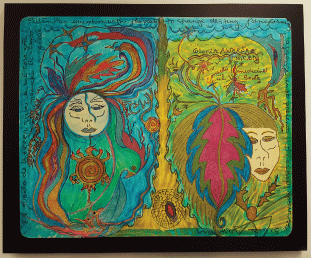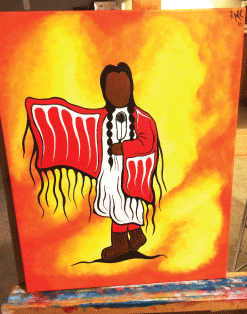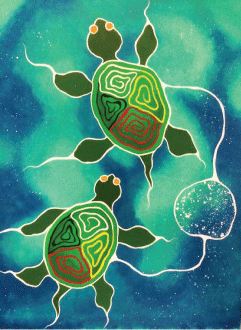National Aboriginal Day
As Canada gears up to celebrate its 150th birthday, it’s imperative that we remember the history of our country goes back way more than 150 years. It’s true. Canada doesn’t begin 150 years ago. As our indigenous communities will tell you, they have been here much, much longer. The history of our country truly begins with them.
So before we get out the fireworks, paint our faces red and white and hang up the maple leafs, let’s take time to celebrate National Aboriginal Day on June 21st. Along with celebrating their unique heritages and contributions to Canada, we also need to recognize that the many injustices they’ve suffered. Good or bad, these are all a part of our history. Until we acknowledge and understand the many complex issues and the history of Canada, we will not be able to move forward and grow together.

What is National Aboriginal Day?
Let’s start at the beginning: what is National Aboriginal Day. It’s a special day set aside to celebrate the diverse cultures of the First Nations, Inuit and Metis peoples. While they’re all Indigenous peoples, each group has its own heritage, language, cultural practices and spiritual beliefs. After numerous calls to recognize and celebrate the many indigenous groups in Canada, National Aboriginal Day was announced in 1996. June 21st is also a significant day to celebrate National Aboriginal Day, being the summer solstice and the longest day of the year. For generations, indigenous communities have celebrated their heritage on this day.
National Aboriginal Day is also a time to reflect on our relationship with Indigenous peoples of Canada, both positive and negative. Along with acknowledging the issues over land and atrocities suffered by indigenous populations during the era of residential schools, we also need to be making the history and background of violence against Indigenous women a major priority. This issue should also not just be confined to the communities it’s affecting - it is a Canadian issue and one we should all learn and care about. One we should all be fighting for when it comes to action and change.

Indigenous Women More Prone to Violence
A new report from Statistics Canada shows that Aboriginal women are much more likely - 2.7 times - to face violence than non-Aboriginal woman. The violence is also normally much more severe , with the homicide rate of indigenous women almost seven times as high. There’s also a much larger percentage of aboriginal women in the missing persons database compared to non-aboriginal women. Even though I ndigenous women make up only 6% of Canada’s population, 60% of missing women in Canada are Indigenous.
These statistics are more than startling. They demonstrate the need for us to be doing much more to combat this issue. Different national and international organizations as well as human rights committees have called on our government to put a comprehensive plan into action. Thankfully, Canada responded with a major announcement: the National Inquiry into Missing and Murdered Indigenous Women. Ontario also recently released a new long-term strategy to end violence against Indigenous women.

Canada’s Response - a National Inquiry
The National Inquiry will hopefully be able to shed light on this national tragedy as well as provide answers for Canadians and families of those who have gone missing or have been murdered. While it won’t undo the past, answers can help families heal and we can move toward a safer and more just future for Canada’s Indigenous women. The Inquiry will:
- Look at systemic factors to see why there is such a high rate of violence suffered by Indigenous women and girls
- Look at the role of institutions like police forces and the child welfare system.
- Aim to come up with solutions to stop this ongoing tragedy and create a better future moving forward.

The Ontario Strategy
The Ontario plan, called “Walking Together”, is a collaborative effort between the Government of Ontario and Indigenous communities. People are coming together to end the cycle of violence and ensure that future generations of Indigenous women can live with safety and respect. The strategy includes:
- More funding for children youth and families - funding to help them deal in times of crisis, to offer proper and effective supports, and to help communities deal with the effects of intergenerational violence and trauma.
- Funding for policing and justice - funds to introduce legislation that will assist police in investigating missing persons cases, provide new tools for First Nations policing, and enhance training for Crown Attorneys and the police.
- Funding for prevention and awareness - funding to help create a national public awareness and prevention campaign to change attitudes and perceptions on the issue of violence against Indigenous women and girls.
- Funding for improved data and research - funds that will support research on the prevalence of violence against Indigenous women and successful practices to combat it.
National Aboriginal Day is a time to learn about the history of our country and those who have lived and taken care of the land for way more than 150 years. It’s also a time to stop and reflect on the past, both our mistakes and our celebrations, and to work toward making positive changes. It’s a time for us to learn more about the systemic violence that so many Indigenous women have been facing for years, and seek answers as to how we can stop this and prevent any other future tragedies. This violence rips families apart, puts children at risk, and puts future generations at a greater risk. Lastly, National Aboriginal Day is a special and important day to honour our Indigenous communities and their contributions to Canada.
https://www.aadnc-aandc.gc.ca/eng/1100100013718/1100100013719
https://nwac.ca/wp-content/uploads/2015/05/Fact_Sheet_Violence_Against_Aboriginal_Women.pdf
https://www.theguardian.com/world/2016/aug/03/canada-indigenous-women-missing-murdered-inquiry






